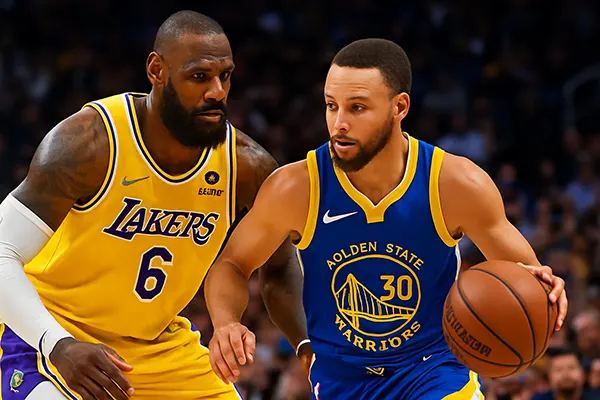Emerging Financial Trends in Sports Leagues: How Massive Contracts Influence Betting Strategies

Over the last decade, the financial dynamics of professional sports have changed dramatically. Skyrocketing salaries, long-term sponsorships, and billion-dollar broadcasting deals have transformed not only how clubs operate but also how bettors approach their strategies. Understanding these shifts has become essential for anyone aiming to make informed decisions in the sports betting market in 2025.
Record-Breaking Salaries and Their Market Impact
The rise in athlete earnings has created a new balance of power in major sports leagues. Football, basketball, and baseball players are signing contracts worth hundreds of millions, often including clauses tied to performance and brand visibility. These financial incentives influence not only team motivation but also individual player behaviour, which can directly affect match outcomes.
High-value contracts tend to stabilise key players, reducing transfer risks and enhancing team consistency. Bettors can use this information to adjust their predictions, as stable rosters often perform more reliably over time. When a team secures its top talent with a multi-year deal, it provides clearer long-term betting opportunities, especially in season-based markets.
On the other hand, the financial pressure on clubs to justify such spending can alter match strategies. Teams may focus more on star-player utilisation, leading to predictable gameplay patterns. Skilled bettors monitor these changes to identify value in alternative markets such as assists, rebounds, or first-goal wagers.
Examples from Leading Sports Leagues
In football, contracts like Kylian Mbappé’s renewed deal with Paris Saint-Germain set a precedent for financial control and player power. The deal’s influence went beyond the club, affecting betting odds across European competitions. Bookmakers began adjusting their algorithms to reflect the statistical dominance of teams retaining elite players.
In the NBA, supermax contracts—those exceeding $250 million—have made some franchises overly dependent on individual stars. This overreliance creates volatility in betting markets when those players face injuries or fatigue. Bettors who follow these financial patterns can anticipate shifts in odds and exploit inefficiencies before bookmakers adjust.
Meanwhile, baseball’s long-term guaranteed deals, such as those in MLB, offer a unique angle for bettors focusing on season-long statistics. These stable player conditions make performance-based bets, like total hits or home runs, more predictable throughout the season.
Broadcasting Deals and Revenue Redistribution
Modern broadcasting contracts are reshaping sports economics worldwide. Multi-billion streaming partnerships with companies such as Amazon Prime, Apple TV, and DAZN have increased exposure and revenue. This financial influx strengthens club budgets, affects transfer markets, and stabilises league competitiveness—factors all crucial to betting strategies.
The English Premier League remains a prime example, where broadcasting income is distributed among all teams, enhancing parity. This has made underdog wins more frequent, impacting the value of traditional bets. Bettors now look beyond the giants and analyse mid-tier teams capable of outperforming odds due to better financial backing.
In contrast, leagues with unequal distribution, like Spain’s La Liga, show more predictable outcomes. Bettors studying financial data can identify structural imbalances that make certain bets—such as goal differences or total points—statistically safer than others.
How Streaming Shapes Betting Behaviour
The growth of live streaming platforms has made betting more interactive and immediate. Bettors now have access to real-time performance metrics during broadcasts, improving decision-making for live or in-play bets. This technological shift enhances engagement and accuracy, rewarding those who adapt quickly to changing game dynamics.
Sportsbooks are integrating data analytics with streaming feeds, offering users predictive insights. The combination of financial transparency and on-screen data has led to more analytical betting, where emotion plays a smaller role than empirical observation.
In 2025, this synergy between broadcasting innovation and betting data is expected to intensify. The future of sports wagering will likely rely on machine-learning tools analysing financial, tactical, and player-specific factors simultaneously.

Sponsorships and Commercial Partnerships in 2025
Sponsorships are evolving from simple brand visibility to strategic collaborations that drive financial growth. In 2025, corporate investments in sports leagues are estimated to exceed £90 billion globally, with tech and fintech firms dominating the scene. These partnerships influence not only team finances but also the odds-making process in betting markets.
Major brands use sponsorship analytics to gauge fan engagement and team exposure. Bettors who understand the financial ecosystem behind these partnerships can predict which teams are likely to experience increased resources and morale. Strong sponsorships often correlate with improved performance, especially in tournaments requiring extensive travel and logistics.
Furthermore, the expansion of cryptocurrency and digital payment sponsors has added a layer of volatility to club finances. Bettors now consider these elements when assessing the financial resilience of teams, especially in leagues experimenting with blockchain-based fan engagement systems.
The Strategic Link Between Sponsorships and Betting
Bookmakers are partnering directly with sports leagues to enhance transparency and attract a wider audience. These collaborations lead to shared data pools that improve odds calculation accuracy. For bettors, this means more realistic lines and fewer market inefficiencies, reducing the chance of arbitrage.
However, sponsorship-driven exposure can sometimes inflate public perception of team strength. Expert bettors avoid this psychological bias by analysing objective data such as financial reports, injury lists, and travel schedules rather than marketing narratives.
In summary, the modern sports economy is deeply interwoven with the betting landscape. Understanding financial flows—from contracts and broadcasting rights to sponsorships—has become a decisive factor in successful sports wagering strategies in 2025.


